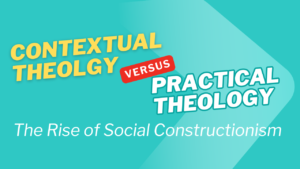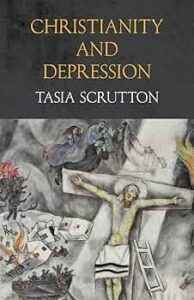This article explores the silent nature of depression in the local church and suggests that developing Jesus-style friendships can break the silence. It adapts the author’s Doctor of Ministry (DMin) research project, which explored the silent nature of depression in the local church and Christianity’s interpretive healing qualities. This article argues that the church has a rich history of helping sufferers interpret their experiences of depression, but changing worldviews, the growth of the modern medical model, and the effectiveness of pharmaceuticals monopolized health and shoved the church to the periphery of the conversation. Silence became the church’s typical response, which promoted an attitude of stigma and avoidance. The article suggests how developing Jesus-style friendships can help break the silence because social or religious barriers do not restrict such friendships. This model of friendship is crucial for giving depression sufferers a sense of identity, meaning, and purpose in the church community.
Breaking Depression’s Silence Within the Church Through Friendships
I suffered from depression for years before I became a Christian. I self-harmed, lived a self-destructive life, and entertained suicidal thoughts, but not once did I know I suffered from depression or that such a condition existed. It was not until a failed suicide attempt forced me to see a doctor that I learned that what I was experiencing had a name. The doctor prescribed antidepressants, but they did not work particularly well. My suffering continued as usual, with the doctor simply increasing the dosage each time I saw him. It was not until a few years later that I met God through a religious experience, and he changed my life. Immediately the depression left me, and I immediately stopped taking the antidepressants. During my next appointment, I told the doctor about the religious experience and that I was no longer depressed. He agreed that I certainly looked happier. I never saw him again after that. However, six years passed by, and now living as a Christian and active church member, the depression slowly returned. This led me on a spiritual journey with God, through which I overcame depression. I narrate these events in McBain (2021).
During the second bout of depression, I noticed that depression and mental health were things that the Spirit-empowered church I attended in Scotland at the time did not speak about. I observed this silence in the years that followed as something many Christians from the UK and the USA experienced. From this, it was only natural I chose to explore the silent nature of depression in the church as my Doctor of Ministry research project (MRP) topic. I studied what it was about depression that made Christians and the church not talk about it. As part of the MRP, I also surveyed approximately 120 depression sufferers from three Spirit-empowered churches located within different demographic areas (i.e., Turley, Bixby, and Glenpool, OK.) to observe their experience of depression’s silence. Towards the end, I suggested some models that churches could use to reach out and help those suffering. This article adapts the content of the MRP to explore the contextual nature of depression while integrating into the study and discussing the MRP survey results more fully. It also offers one suggestion of how churches can respond to depression through hospitality and friendship.
Depression and the Church’s Silence
Depression is an experience that affects one’s mind, behavior, body, and relationships. Rowe (1996) describes it as like being in prison:
Intellectually you know that you are sharing space with other people, that you are talking to them and they are hearing you. But their words come to you as if across a bottomless chasm, and even if you can reach out and touch that other person, or that other person touches you, nothing is transmitted to you in that touch. No human contact crosses the barrier. (pp. 1–2)
Rowe’s language reveals the complexity of depression and the dichotomy present between what the sufferers know is happening and what their sense-experience tells them is happening. Swinton’s (2001) phenomenological study of the lived experiences of depression sufferers provides an excellent description of how sufferers experience the illness. His interviews with Christian sufferers isolated central themes of their experiences, such as meaninglessness, questions about the meaning of life, feelings of abandonment, physical and psychological exhaustion, and others. He summarizes the condition as a cataclysmically spiritual experience that affects every area of the sufferer’s life.
Considering the nature of depression and the metaphors sufferers use to describe it (e.g., darkness, hopelessness, and despair), one would assume that the church, which is supposed to be a light to the world, would have no trouble helping sufferers. Unfortunately, this is not the case. Rather than providing the shining light of Christ and embracing sufferers as it leads them to wholeness, it appears that the church is mainly silent about depression and mental illness in general. In an interview with Evans (2014), Simpson spoke of her own experience with the church regarding her mother’s mental health problems:
. . . we did not receive the help and support we needed from the church. Like other families, we were affected by stigma and a sense of shame that kept us mostly silent about our problems. And church leaders who wanted to help us, for the most part, didn’t know how to help . . . Instead, we felt pressure to pretend as if everything were fine and to put on our best face at church. (n.p.)
Simpson accuses the church of handling mental illness in ways that do not reflect the love of God and are isolating and cruel. Stetzer (2018) agrees and challenges the church to move past the silence, shame, and stigma and display Christ’s love.
In light of these criticisms, the silence of depression appears as a problem within the church. It is a problem substantiated by the MRP survey (McBain, 2020). One question asked how respondents felt the church leadership and pastoral carers supported them in their struggle with depression. About 50% said that they had not told anyone they were depressed. Similarly, in another question, 50% said they had not even told their friends in the church. When asked why they never told anyone about their struggle with depression, nearly 20% said that it was their private concern, a further 21% said that there was no one close enough in the church to whom they could talk, and 44% said they were ashamed of their depression. Overall, 60% of people admitted to hiding their depression. It should be noted that the church’s theology (i.e., what was preached from the pulpit) accounted for less than 5% of those surveyed as to why they told no one (McBain, 2020). These responses reveal an element to depression that stops people from speaking about it, which begs the following question: how can the church respond and help sufferers if they are not telling people in the church community they are depressed? The article will suggest that developing meaningful friendships can solve this problem. For the moment, it is clear from the survey and other sources that there is something about depression that stops people from talking about it. The following section will provide a brief socio-historical survey to explain one reason for the silence.
Social History of Depression and Its Relationship with the Church
History knows depression as melancholia (Nemade et al., n.d.). It is a term taken from the Latin transliteration of a Greek word referring to a mental disorder that involved prolonged sadness, fear, and depression (Blazer, 2005). The first description of the condition is from Mesopotamian literature dating from 2000 BCE. It is mentioned numerous times throughout human history. For the brevity of space, this historical section will begin at the Middle Ages. During this period, and the lead up to the Protestant Reformation and Counter-Reformation, most people thought demons were the cause (Taylor & Fink, 2006). Coudert (2014) argues that the people’s perception of nothingness and worthlessness mixed with the volatility of world affairs augmented an already fragile melancholic state. When combined with the cultural belief that demons infested the world, people of this period thought that demonic possession caused melancholy and mental illness.
The church’s response to these beliefs was exorcism. Exorcists and theologians published a variety of texts detailing methods and instructing how to identify demonic possession. As these texts developed, so too did different symptoms of demon possession. Because of conflicting symptoms, the texts encouraged exorcists to seek a physician’s opinion before performing an exorcism. They hoped that a medical professional’s advice would help weed out fakes and stop mistakes from happening (Coudert, 2014). The development of conflicting symptoms and appeal to medical professionals reveal the emergence of a tension between two competing worldviews. On the one side was a spiritual understanding of the world that people were questioning. On the other side was a developing rationalistic worldview based on reductionism and reason (Bosch, 1996). The new enlightened worldview included empiricist and positivist models of knowledge. These did not consider the reality of anything not rationally explainable like the spirit world. As a result, exorcism began losing influence as the proper response to mental health issues.
From the 17th century and even into the 19th century, Christianity was still at the center of mental illness and depression. While physicians focused on the biological origins of melancholy, religious melancholy emerged as another explanation. Blazer (2005) notes that religious melancholy is closely associated with the spiritual life of many traditions and was most active during the medieval period and the 18th century. Typically, people understood it as some kind of spiritual visitation caused by wandering away from God. Even into the 18th and 19th centuries, the Protestant understanding of humanity painted such a bleak picture that people could be sure they were in or out of God’s plan. Anxiety, doubt, and despair abounded, and many people had their dark nights of the soul. The only way to ease these feelings was for a new social movement of great awakenings and religious enthusiasm (Blazer, 2005).
As these great awakenings took place during the 18th century, physicians began to separate mental illness from religion. A more medicalized view emerged that coincided with a positive understanding of humanity different from the sinful beings that the Reformers broadcast. The power of reason became humanity’s most prominent aspect—only human reason could make humanity good or bad; sin had nothing to do with it. With the power of reason taking a preeminent role, a growing sense of self-awareness and individuality also emerged. Coudert (2014) explains how this meant that people ceased interpreting depression and mental illness using a social context (i.e., through religion and the church) and began interpreting it from their individual contexts. As a result, by the end of the 18th century, most people understood that mental illness was a natural malady and had nothing to do with God or the supernatural. Medicalization went hand-in-hand with the period’s more positive view of humanity. Patients preferred a more physical explanation of what was bothering them because it minimized their personal responsibility, guilt, and shame.
During the 19th century, melancholia was recognized as a core illness among other forms of insanity (Taylor & Fink, 2006). It was understood that melancholia had biological origins and required biological treatment methods (Blazer, 2005). During this period and into the 20th century, mental health definitions began to emerge. The term “melancholia” was increasingly substituted for the term “depression.” As the 20th century continued, the effectiveness of pharmaceuticals in treating other mental ailments meant that a new optimism arose for seeing depression as a biological illness with a psychiatric cure (Taylor & Fink, 2006). As pharmaceuticals became more effective in treating depression, the understanding that depression was a biological illness permeated the health system through the biomedical model. The biomedical model is a healthcare model that views humans as machines that operate among certain identifiable principles (Peters, 2003). It reduces a person to their components and sees disease as a dysfunction that one must control, minimize, or eliminate (Swinton, 2005). Within this model, how a patient experiences depression is a symptom of the biological abnormality itself (Engel, 1989). This model, linked with the successfulness of new medications and the pharmaceutical industry’s influence, came to define and interpret depression (Blazer, 2005). This move completely took mental illness and depression out of the church’s domain and placed it firmly within the medical field. This shift in professionalization meant that the medical sector monopolized the physical and mental aspects of healing. At the same time, the clergy forfeited their position as providers of care for mental ailments (Vacek, 2015). The church lost its voice, and people no longer saw it as an expert.
The historical survey reveals that depression is contextual. Someone’s worldview will dramatically affect how that person understands depression. Steve Fenton and Azra Sadiq-Sangster (1996) show that many symptoms are universal in the way sufferers will experience the same symptoms cross-culturally. However, sufferers will also experience depression relative to their social and cultural contexts. Because of this, a 21st century American will understand and respond to their illness differently from a 15th century European. Likewise, the church responds to depression in ways consistent with the culture and worldview in which it is a part. For example, in the Middle Ages, the church responded using exorcism. In the 17th and 18th centuries, it responded through religious melancholy and the Great Awakenings. In the current period, the church responds through stigma and silence. All these responses correspond to beliefs of the dominant worldview of that time. And for each of those responses, changes in worldview governed the usefulness of the response. With this in mind, we see how changing culture and worldviews pushed the church from the center of dealing with depression to the periphery. These changes moved the etiology of depression from being spiritual to biological. As a result, the treatment of depression moved into the realm of the medical profession. Also, a rise in individualism made health a private matter and excluded the clergy. These findings help explain why the church’s current response to the issue is one of silence. The church is silent because western culture has taught it to be so.
One Possible Response: Developing Friendships
Culture and society have taught the church to be silent about mental illness and depression. Yet, the church has a vibrant background in helping people reinterpret their experiences of mental illness in ways that are more akin to a biopsychosocial-spiritual framework and less reductionist than the biomedical model. The MRP survey revealed that the church could help people suffering from depression, for approximately 80% of those who told their friends or church leaders found them supportive. One framework that might provide a safe space where the church can help and where sufferers can speak about their experiences is by developing friendships.
Difficulties in Developing Friendships
Perhaps the easiest way for those in local congregations to help people who are experiencing depression is by simply being their friend. However, this may not be as easy as it seems because those struggling with depression do not necessarily tell people the truth of what they are going through. It is usually impossible to look at someone’s physical appearance and know they are depressed. What tends to happen is that people begin to isolate themselves. This happens because western culture and society besieges them with images of what being mentally healthy should look like, especially in the Pentecostal and Charismatic movement. It has a unique image of mental health, which involves being joyful, abiding in peace, and being thankful. However, when someone struggles with depression, it may be difficult for them to cope in the way their community expects—the rhetoric of which often involves confessing the Word, rebuking the devil, and praying through. Faced with this difficulty, they may find it challenging to be the type of Christian their community expects of them. Since they struggle to live up to community expectations, the danger is that they will increasingly begin to see themselves as one of the community but not a member of the community. Unless things become terrible, the depressed person will remain part of the community in a physical sense but will begin to see themself as someone who the community might reject because the sufferer knows they do not look like a group member. Swinton (2005) explains this process. He observes how the way sufferers view themselves turns into a cultural lens that they use to navigate the community and interpret everyday life experiences. Therefore, when they go to church, they may see themself as someone who others will stigmatize and begin to exclude themself from the community.
Compounding things is that pain itself isolates people from those closest to them. This is also true of depression. Sufferers think that no one understands what they are going through. It is natural to feel this way because everyone’s suffering is unique and is filled with deep personal meaning. A person’s expectations, values, hopes, culture, and worldview are mediums that make up our life experiences and teach us how to respond to pain Swinton, (2005). Therefore, isolation is a somewhat justified response because no one can know what sufferers are going through; one can only empathize. Hauerwas (1986) says that those in pain want help, and those not in pain want to help. Yet, it is difficult for those not in pain to help because they cannot experience the sufferings of others. He explains that this dilemma causes a double burden because it is difficult enough to make friends at church when everything is normal.
The desire for sufferers to isolate certainly occurs, but it remains true that the shared experience of pain unites people (Hauerwas, 1986). This fact speaks towards the usefulness of dedicated small groups and workshops to help support people with similar needs. It also explains some attitudes I observed in congregations over the years. I have seen a divide between the empathy that those who suffer/ed from depression share with each other and the apathy (or nonchalant attitude) with which some people who have never had depression view sufferers. Even though there may be a gap between these groups, it is also the case that friendships can grow despite their differences. Hayes’ (1993; as cited by Swinton, 2001) social psychology research shows that people tend to make friends with those they have regular contact with regardless of their differences.
Breaking the Silence Through Friendship
Swinton (2005) offers a model of friendship that may be suitable to break the silence. He interprets Mark 1:40–45 and explores the social and theological meaning behind the illness. He draws a parallel between the depression sufferer’s experiences and how their church community views them with those of the leper and his society, where leprosy was considered a socially repugnant disease resulting in isolation and social and religious exclusion. With this in mind, Swinton explains that one way to read this passage is to see Jesus as a physician-like figure who uses divine healing to take away the disease. In this understanding, health is the absence of disease, so Jesus makes disease absent to bring about health. Within this reading, as in today’s society, disease is a dysfunction that one must control, minimize, or eliminate to ease suffering. Within this framework, society considers some illnesses worse than others. So, if someone receives a diagnosis that society does not look favorably upon (depression in this case), society will view and interact with the person differently. The sufferer is negatively labeled. As a result, the sufferer will interpret their experiences of pain and suffering through that label and navigate their life and community differently from how they would have if the condition were absent. One way the MRP observed how depression sufferers navigated church differently was in the area of church attendance and volunteering. Twenty-four percent of the respondents said depression frequently stopped them from attending church and events, and 41% said it occasionally stopped them. Twenty-seven percent said it frequently stopped them from volunteering at church, and 29% said it occasionally stopped them from volunteering (McBain, 2020).
Jesus went against these social and religious constraints. He associated with the leper’s suffering and showed that he accepted the leper into his Kingdom. This is a distinctively different approach to today’s form of friendships, which are mainly built around the principles of exchange (“What can I get out of this?), or the idea that like attracts like. Both these kinds of relationships are not the kind that Jesus practiced. Jesus made friends with those who society marginalized, stigmatized, and refused to access God. This is the type of friendship the church should model to help depression sufferers—one structured around grace and love and a willingness to be friends with those unlike us (Swinton, 2005). Jesus’ actions are a perfect model to break the cultural constraints placed upon the church and break the silence of depression. As Swinton (2005) says,
“The church’s task is to provide a physical and spiritual space where people perceived by society as “different” can find a home, where there is neither Jew nor Greek, male nor female, mentally ill nor mentally healthy, but only travelers struggling together to sustain faith in God and trust in one another.” (pp. 74–75).
Adopting Jesus-style friendships can help bridge depression’s silence. However, using Jesus’ pattern of friendship requires providing the physical and spiritual space where friendships can occur. The concept of space is an important one. D. J. Louw (2008) discusses the close association between healing and space and describes how human relationships help form spaces and places into what they become. From this perspective, Louw states that incarnational and eschatological concepts contribute to and help develop a theology of space and place. The Holy Spirit plays a vital role in this because he indwells Christians with God’s presence. Christians, therefore, act as the incarnational body of Christ. Louw’s contribution is valuable because he shows that friendships do not take place in a vacuum. Instead, they take place in human spaces filled with meaning and presence. In a fundamental sense, the church community must make space in its life for people to build meaningful friendships. This can take many forms, from the formality of the worship service to two people meeting for coffee one afternoon through the week or being present together at a child’s baseball game.
Even during formal church events where the context makes it seem impossible to develop friendships (e.g., during the Sunday morning worship service), there is power in the gathered community to bind sufferers to the church. In such situations, although someone may have given up their belief in God and hope of healing, their position within the church binds them to the community. It provides them with the momentum they need to continue on their journey. For instance, one lady describes how the church’s worship service acts as a safe space where she can bring her doubts and questions to God within the comfort of a community of fellow worshipers. The preaching, symbolism, music, and lyrics are mediums that go beyond the restrictions placed upon her by her doubting mind and help her express her deep longing for God and her spiritual need. Through the church service, she can believe despite her struggles (Swinton, 2001).
Conclusion
This study argued that the church is silent about depression because Western culture has taught it to be. Changing worldviews, the modern medical model’s growth, and the effectiveness of pharmaceuticals, monopolized health in such a way that shoved the church to the periphery of the conversation. In this position, the church believed it had nothing to offer those suffering. Silence, then, became the church’s typical response. Still, history shows that the church has a rich interpretative history that can help those suffering. The challenge for the church is to break the silence. One way this paper suggested was by developing meaningful friendships modeled after Jesus’ approach. Social or religious barriers do not restrict this type of friendship. This type of friendship is crucial for giving depressed people the space to heal and a sense of identity, meaning, and purpose.
References
Blazer, D. G. (2005). The Age of Melancholy: Major Depression and Its Social Origin. Routledge.
Bosch, D. J. (1996). Transforming Mission. Orbis Books.
Engel, G. L. (1989). The Need for a New Medical Model: A Challenge for the Biomedical Model. Holistic Medicine, 4, 37–53.
Evans, R. H. (2014, August 18). Mental Illness & the Church: An Interview with Amy Simpson. Retrieved from https://rachelheldevans.com/blog/mental-illness-church-amy-simpson.
Fenton, S., & Sadiq-Sangster, A. (1996, January). Culture, Relativism and the Expression of Mental Distress: South Asian Women in Britain. Sociology of Health and Illness 18(1), 66–85. https://doi.org/10.1111/1467-9566.ep10934418
Hauerwas, S. (1986). Suffering Presence: Theological Reflections on Medicine, the Mentally Handicapped, and the Church. University of Notre Dame Press.
Hayes, N. (1993), Principles of Social Psychology. Lawrence Erlbaum Associates.
Louw, D. J. (2008, May). Space and Place in the Healing of Life: Towards a Theology of Affirmation in Pastoral Care and Counselling. Verbum Et Ecclesia 29(2), 434–37. https://doi.org/10.4102/ve.v29i2.23
McBain, R. D. (2020). Exploring The Silent Nature of Depression in The Church and Christianity’s Healing Qualities [unpublished doctoral dissertation]. Oral Roberts University.
McBain, R. D. (2021). Depression, Where is Your Sting? Resource Publications.
Nemade, R., Staats Reiss, N., & Dombeck, M. (n.d.). Historical Understandings of Depression. Retrieved from https://www.mentalhelp.net/articles/historical-understandings-of-depression/.
Peters, T. (2003). Science, Theology and Ethics. Ashgate.
Richey, T. (n.d.). Demographics. Bixby: The Natural Choice for Business. Retrieved from https://web.archive.org/web/20110719141432/http:/www.choosebixby.com/demographics.html.
Rowe, D, (1996). Depression: The Way Out of Your Prison. Routledge.
Stetzer, E. (2018, April 20). The Church and Mental Health: What Do the Numbers Tell Us? Retrieved from https://www.
christianitytoday.com/edstetzer/2018/april/church-and-mental-health.html.
Swinton, J. (2001). Spirituality and Mental Health Care: Rediscovering a “Forgotten” Dimension. Jessica Kingsley Publishers.
Swinton, J. (2005). Healing Presence. In R. B. Kruschwitz (Ed.), Suffering (pp. 68–75). The Center for Christian Ethics, Baylor University.
Taylor, M. A., & Fink, M. (2006). Melancholia: The Diagnosis, Pathophysiology and Treatment of Depressive Illness. Cambridge University Press.
Vacek, H. H. (2019). Madness: American Protestant Responses to Mental Illness. Baylor University Press.
This article was first published in Spiritus: ORU Journal of Theology 6, no. 2 (2021): 285-97; and Salubritas: International Journal of Spirit-Empowered Counseling 1, no. 1 (2021): 103-115.






